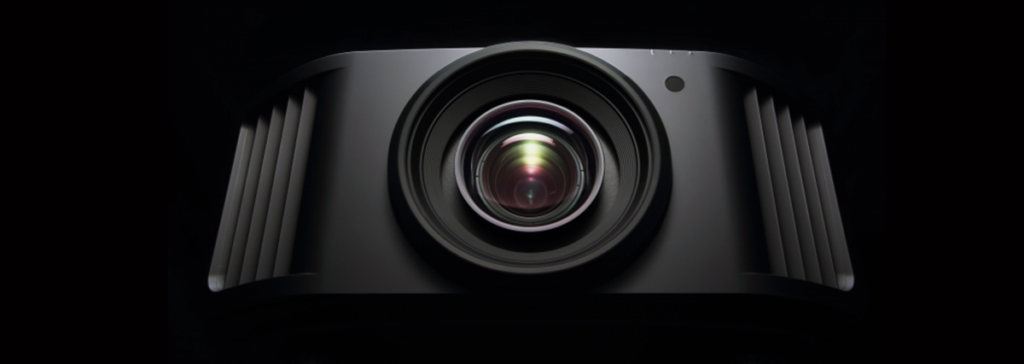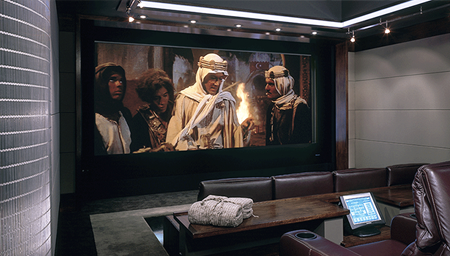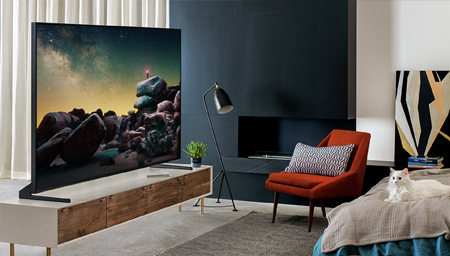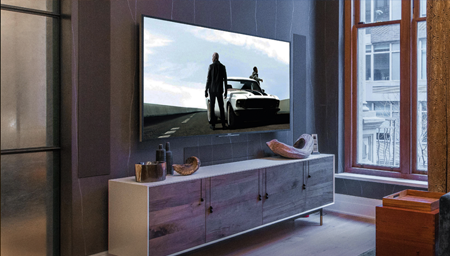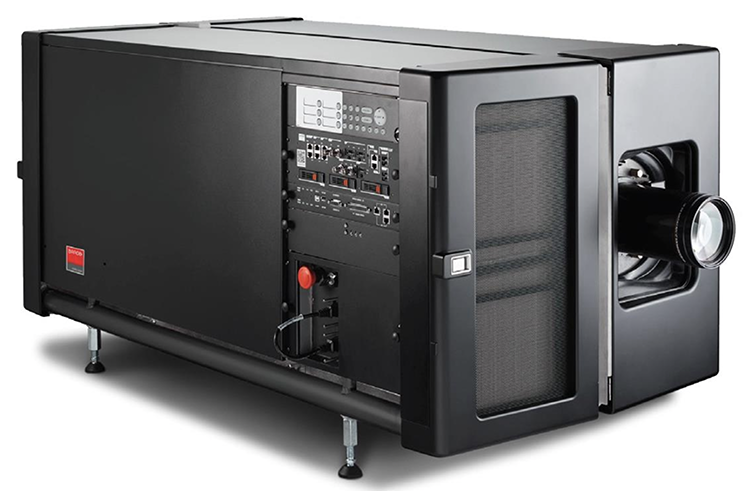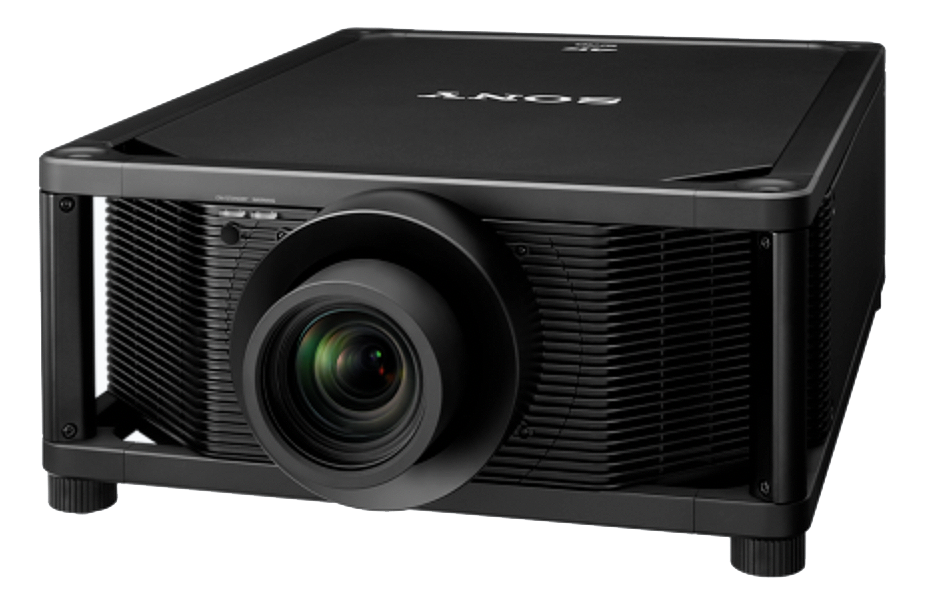Just because a projector is usually hidden away doesn’t make it any less important when you’re seeking the best possible viewing experience
by John Sciacca
updated December 11, 2021
Defining “luxury” can be tricky as it’s likely to mean different things to different people, and even different things to the same person at different points in their life. To illustrate this I can think of no better example than a Rolex timepiece, something nearly anyone would consider luxurious. (Though, to be fair, Rolex isn’t considered truly luxury by many watch aficionados.) When you look at a Rolex—regardless of the model, price, or number of complications—it’s still a pretty “dumb” watch by today’s metrics. It does a decent job of keeping the time, never needs a battery change, and can survive underwater much further than you can but doesn’t really do anything special when compared to watches that cost considerably less.
When we start talking about “luxury” as it pertains to home entertainment, we need to push the performance boundaries well beyond just what’s necessary and start considering things like system integration and functionality. So, when it comes to a video display—one of the key components to any entertainment system, premium or otherwise—what separates a luxury experience from something more mundane?
There’s certainly a pride of ownership for handmade products like a Rolex that applies to audiophile products like hand-crafted amplifiers milled from solid billets of aluminum with laser-engraved front panels or speakers in glorious wood and hand-painted finishes. But you aren’t likely to feel any emotional attachment or deep connection to a projector. You won’t spend time gazing at it, since it’s likely to have a pretty utilitarian black, rectangular design. And because it will probably be secreted in an enclosure or another room, you’ll likely never touch it, so you won’t develop that prideful connection to the hardware. With a display, the luxury metric is measured largely in improved performance that results in superior image quality.
But you certainly will love the picture and the experience—I still feel a thrill every time my 115-inch 2.35 screen lowers and the image from my 4K projector illuminates it. And that will drive the pride of ownership and sharing the experience with friends and family.
I’m going to focus here on five benefits gained from investing in a luxury projection system and how premium offerings differentiate themselves from lesser models. (This post focuses on projectors, but a quality screen is a crucial element in any projection system, so I discuss those in a separate article.)
LIGHT ENGINE
One improvement in a luxury projector over lower-end models is a better light engine. This can mean higher light output (measured in lumens) and/or a better light source, such as RGB LEDs or lasers instead of a traditional lamp-based design. A projector with higher light output is extremely beneficial when it comes to driving larger screen sizes. While most modern projectors won’t struggle to illuminate a 100-inch screen, those same models will lack punch when tasked with 150-, 200-, or especially 300-inch screens.
For truly cinematic screen sizes, you’ll need a projector than can illuminate the screen equally from corner to corner. The higher light output is also crucial for delivering the high-brightness peaks required from HDR (high dynamic range) content, which only gets more demanding as screen sizes increase.
More flagship models are transitioning from traditional high-pressure lamps to lasers for their light source because of a variety of benefits. For instance, a laser light engine can power on and off far faster. The laser light output can also be modulated dynamically to improve contrast ratio. Lasers also run cooler—and quieter—than traditional projectors, allowing them to be installed in locations where a lamp-based projector might not function. A laser-light engine has a far longer lifespan (typically 20,000 hours) than a traditional lamp-based projector and maintains a brighter, more color-accurate image over its lifespan. Also, a better light source contributes to the projector’s ability to produce a wider range of the color spectrum, which is becoming increasingly important with HDR’s wider color gamut.
LENS
One of the factors that most influences image quality in photography—either with a cellphone or traditional camera—is the size and quality of the lens. A larger lens with more glass elements does a better job of capturing light and images the way we see them. Similarly, the quality of a projector’s primary lens has a huge impact on the screen image. Sony’s, JVC’s, and Barco’s high-end projectors use massive lenses featuring multiple all-glass elements. If bought separately, the lens alone would cost more than $10,000. The result is tighter focus, superior pixel detail, better corner-to-corner sharpness, better color accuracy, less light loss, and tighter color alignment, all of which add up to superior images. Luxury projectors are also frequently offered with different lens options to ensure ideal placement of the projector within the room. Instead of having the projector dictate where it wants to go, these options let your designer/integrator place it where it will work best for any screen size.
VIDEO PROCESSING
Movies are typically filmed at 24 frames per second (fps), which equates to nearly 199 million pixels on screen every single second. And more streaming content is being delivered in 4K at 60 fps, with 4K at 120 fps being used by modern gaming systems. That requires a lot of processing horsepower to make sure things look their best. This is especially important when watching non-native 4K content, such as traditional broadcast TV, DVD/Blu-ray discs, and much of the content on streaming services like Netflix and Amazon, which the projector’s video processor upscales to its native 4K resolution. This is most important with moving objects, and a good video processor will keep diagonal lines sharp and straight without introducing any “jaggies.” The quality of the processor also determines how well a projector tone-maps HDR images, delivering the widest range of contrast without crushing either blacks or whites, to produce an image that has lifelike depth and realism. Barco also includes unique processing in its models it calls Warp & Blend that allows the projector to digitally manipulate the image to compensate for any alignment distortions and allows multiple projectors to be seamlessly combined.
SUPPORT FOR MULTIPLE ASPECT RATIOS
One of the real benefits of a luxury projection system is its ability to handle content filmed in different aspect ratios in the most cinematic manner. With a traditional 16:9 aspect-ratio direct-view TV, anything that’s not 16:9 (including almost half of Hollywood movies and an increasing amount of original content on streaming services like Netflix, Amazon, and Disney+) is shown with black bars at the top and bottom of the image. This makes these movies appear smaller and less cinematic. By using a projector with either lens memory or a separate anamorphic lens system such as a Panamorph Paladin along with a screen that incorporates variable masking à la Stewart Filmscreen’s Director’s Choice, you will always have the largest, most cinematic image on screen regardless of the aspect ratio the filmmakers chose, with no distracting black bars.
SYSTEM INTEGRATION
Luxury projector manufacturers understand their products are likely to be part of a larger system, so their models are generally designed to better integrate with other components. Whether it is tighter, more reliable integration with a third-party control system like Crestron or Control4, the ability to respond to masking and control cues from a Kaleidescape movie server, the ability to generate and send notifications to the dealer if there’s a problem, offering advanced adjustment tools for a professional video calibrator, or even allowing remote access and calibration, these projectors are meant to play nice with the entire system and ensure they deliver the goods whenever you press “Play”!
Probably the most experienced writer on custom installation in the industry, John Sciacca is co-owner of Custom Theater & Audio in Murrells Inlet, South Carolina, & is known for his writing for such publications as Residential Systems and Sound & Vision. Follow him on Twitter at @SciaccaTweets and at johnsciacca.com.
JVC’s DLA-NZ9 projector
click on the images to enlarge
Sony’s VPL-VW5000ES projector
Sign up for our monthly newsletter
to stay up to date on Cineluxe
© 2023 Cineluxe LLC

